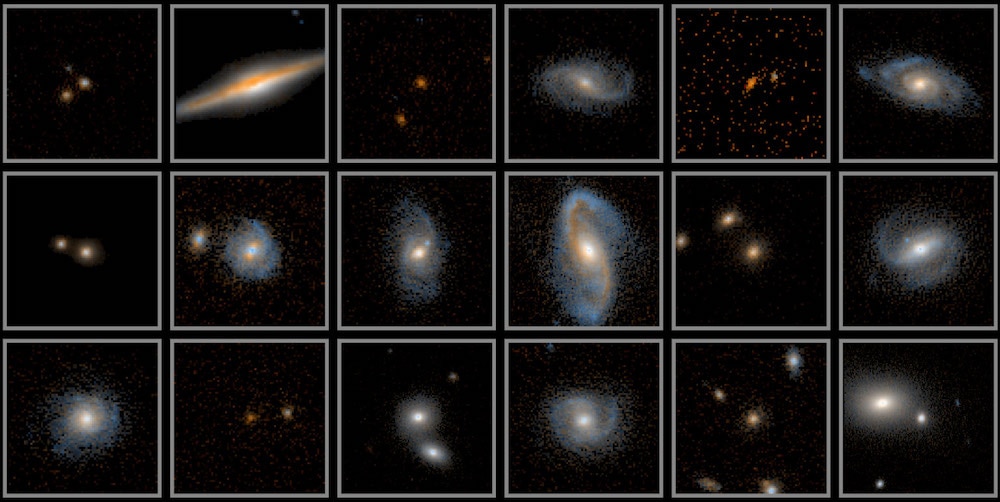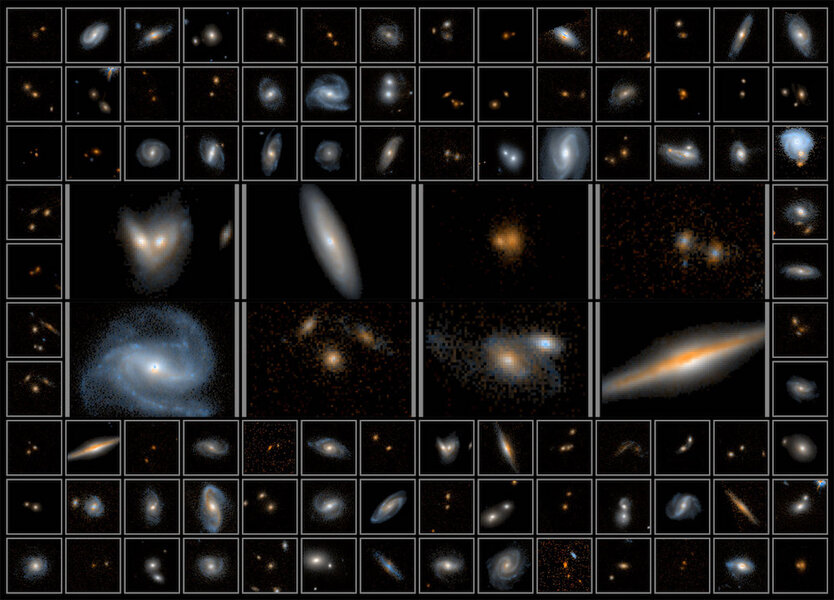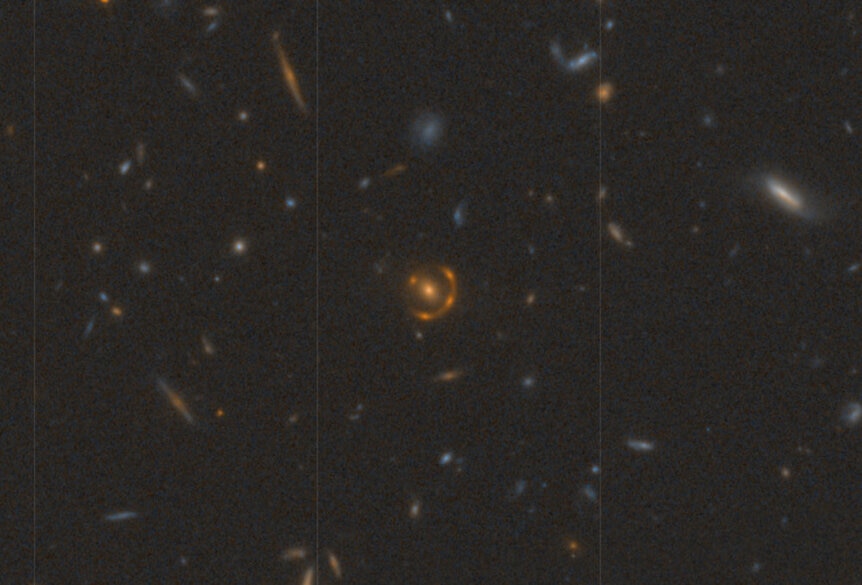This one weird trick allows Hubble to make a huge infrared image of the sky
Fast and Furious: Hubble Drift.

Astronomers employed a relatively new technique to create a highly detailed infrared mosaic of a patch of sky an impressive six times larger than the full Moon. This is the largest infrared field ever observed by Hubble, and likely won’t even be surpassed by JWST.
The survey is called 3D-DASH, which stands for Three Dimensional Drift And Shift. The “3D” part comes from the survey using the Wide Field 3 imaging camera on Hubble, which gives a two-dimensional map of a galaxy, and also using a grism, a type of detector that takes a spectrum of the galaxy that yields its distance via redshift, giving the third dimension [link to paper].
The drift-and-shift part is very clever. One of Hubble’s superpowers is its high-resolution, being able to see very small details in an object. To do this, it uses its Fine Guidance Sensors to lock onto a guide star for every observation. These generate extremely precise pointing measurements, and if the telescope drifts the sensors see that and tell the three gyroscopes to compensate for it.
That’s time consuming, though; it can take up to 10 minutes to lock onto a star, and that has to be done every time you move the telescope to a new spot on the sky. Worse, the rules for using Hubble only allow two such guide star searches per 90-minute orbit, so constantly finding guide stars would eat up all the time, when you need that precious time for actual observations.
DASH throws that all out. This technique basically shrugs its shoulders and says, 'Hey, our resolution is so incredibly good already that a little drift won’t kill us,' and just uses one guide star acquisition per orbit. After that it just lets the ‘scope drift. By taking lots of short exposures the drift doesn’t hurt that much, and afterwards the observations can be combined in such a way to be able to retrieve a lot of the resolution back. It sacrifices a little bit of resolution for saving a lot of time and being able to look at a lot more sky.
Like a lot a lot. The biggest infrared survey Hubble has done previously is the CANDELS survey that covered 0.2 square degrees, roughly the size of the full Moon on the sky, and took 900 Hubble orbits to complete. 3D-DASH is six times bigger, and only took about 200 orbits. They got about 1,200 Wide Field Camera pointings in that time, all in the near-infrared at a wavelength of about 1.6 microns, well outside what the human eye can see. There’s an online interactive explorer you can use to peruse the observations if you want to see what they look like. Pretty cool.
Other surveys go deeper — meaning they used longer exposures to see fainter objects — but are smaller, what we sometimes call “pencil beam” surveys. So 3D-DASH trades going deep for going big, but even so gets down to objects so faint that the dimmest star you can see by eye is still about 100 million times brighter.
I’ll note the grism observations to complement the imaging ones are being executed now, and will take some time to process.
So why do this? This particular survey was done to look for galaxies more than roughly 10 billion light years away. Due to the expansion of the Universe, a lot of the interesting stuff those galaxies do has its light redshifted into the infrared, so if you want to see those things you need to see faint objects at those wavelengths. Also, the 3D-DASH data can be added to observations taken earlier in the near-infrared, roughly 0.8 micron wavelengths, which can add more information about what kinds of stars are in these galaxies.
Surveys are important because the bigger they are, the more likely they are to capture rare things. Pointing Hubble, or any ‘scope, at one galaxy or a hundred will tell you a lot, but those specific pointings won’t likely catch anything just by chance. One purpose of 3D-DASH was to hopefully find extremely massive galaxies which existed when the Universe was young, Those are extremely rare, and if you want to discover them your best bet is to cover as much sky as possible as quickly as possible. Then, if and when you spot one, you can point the telescope at it specifically to learn more.
We know these galaxies grow by eating other, smaller galaxies — we see this happening today, and even our Milky Way is currently cannibalistically consuming a number of small galaxies — but the details of how this worked billions of years ago aren’t well known. 3D-DASH has a good chance of helping astronomers understand this better, at a small cost in time to Hubble.
And James Webb Space Telescope may not be able to match the size of 3D-DASH. It’s designed to look at specific things, not take surveys. The fields of view of its cameras are relatively small, so sweeping the ‘scope around to mosaic big fields is not likely to happen. It would take too much time, when there are thousands of other things it could be doing.
So this is all pretty wonderful! I think it’s great that we can still find new ways to use Hubble, which has been observing the heavens for over 32 years now. Turns out you can teach an old dog new tricks, as long as you don’t mind it drifting off a bit.































